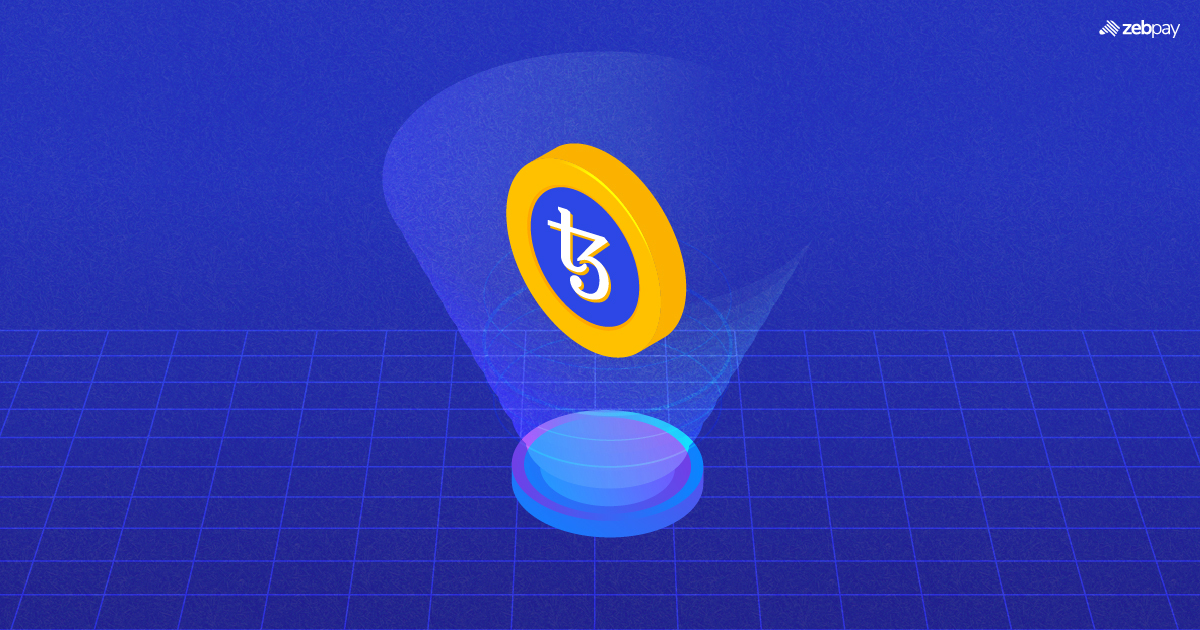Web 3.0 is the newest iteration of the World Wide Web that the crypto industry is building using blockchain technology. As such, crypto projects add capabilities to the existing infrastructure to improve and enhance our interaction with the internet. Not just that, these projects aim to re-envision Web 2.0’s foundations and incorporate concepts such as decentralisation and token-based economics. However, most of the protocols do not allow token holders that do not have enough tokens to stake or participate in the governance process. This inability to stake or participate in governance alludes to the exclusivity in user governance which goes against the principles of an ideal world. To solve this problem, Tezos has made some considerable strides. Let’s understand what it is and how it functions!
So, What is Tezos (XTZ)?
Tezos is a multipurpose, security-focused, and open-source blockchain designed to power the Web 3.0 evolution. It focuses on user participation and governance as its foundational pillars and aims to make Web 3.0 a user-governed and user-centric movement. It is a platform where users can interact and exchange value with each other freely without requiring an intermediary on the platform. Meanwhile, Tezos can execute peer-to-peer transactions and is a smart contract deployment platform. Additionally, it can be upgraded quickly to include features that enhance its functionality. Here are some of the features of the blockchain:
- Tezos leverages programming languages like OCaml and Michelson to provide institutional-grade security to host the future of Web 3.0.
- The Tezos platform is built using mechanisms that ensure community governance and participation. Users can participate in evaluating, proposing and approving proposals on Tezos.
- It works with the efficient Proof-of-Stake algorithm that requires less energy and cost to operate.
- The smart contracts on Tezos can use formal verification which allows them to be mathematically verified. It’s reliable and secure as well.
- Tezos blockchain is built in a way that it can quickly adjust, adapt and add features through its upgrade mechanism.
A quick history of Tezos
The most crucial offering of the Tezos blockchain is its on-chain governance that allows users to swiftly make future changes together. So, let us understand how that came about!
Tezos was founded by Arthur Breitman who wrote a position paper and a white paper in 2014 detailing his vision for Web 3.0. He wrote both papers under the pseudonym “L. M Goodman” just like Bitcoin’s anonymous founder, Satoshi Nakamoto. In his paper, he stressed that Bitcoin’s design does not account for a more inclusive governance process and the creation of tokens. This led him and his wife, Kathleen Breitman, to design Tezos with token issuance and a smart contract platform coupled with an on-chain governance model.
How does Tezos work?
The Tezos ecosystem is divided into network, transaction, and consensus protocols to allow for future changes. The transaction and consensus protocol work separately and connect to a generic network shell. This shell is responsible for maintaining the current state of the blockchain and for allowing internal checks to validate new changes. The changes can be proposed by anyone to put them to a vote from token holders. The developers who propose changes are asked to make a payment to incentivise more impactful developments on the platform.
Tezos uses a customised and new version of a Proof-of-Stake (PoS) consensus model. In this model, token holders can lock their tokens and participate in consensus in exchange for the ability to validate blocks. In the crypto industry, this process is known as staking. However, Tezos calls it “baking”. The platform allows users to delegate tokens to bakers without giving away ownership. The baker and the token holder that delegates their token are rewarded proportionally with new XTZ tokens. This system allows token holders with fewer tokens than the required amount (at least eight thousand XTZ tokens) to become a baker and participate in the validation process. Within the consensus mechanism, a proposal is only accepted if there is a supermajority (more than 80% voting for “yes”).
The XTZ token: an overview
The XTZ token is the native token of the Tezos platform. It is used to pay for transactions and smart contract execution. The XTZ tokens play a central role in the consensus mechanism and on-chain governance system of the platform. Moreover, the validators in the platform (aka bakers) earn rewards by staking their tokens and validating transactions. Token holders with less than the required tokens can also earn rewards by delegating their tokens to bakers. Token holders also get one vote per token to vote on the proposals made for future upgrades. Furthermore, the Tezos Foundation is responsible for the allocation of funds collected during Tezos’s Initial Coin Offering (ICO). These funds are used to support the growth and development of the Tezos ecosystem. However, the foundation does not control the future direction of the Tezos protocol.
“Where to buy Tezos coin from?”. Well, you can buy the Tezos token with Zebpay.
Conclusion
Tezos is a multipurpose blockchain that is designed to keep user participation and governance at the centre of the Web 3.0 revolution. The Tezos blockchain allows for smart contract creation and deployment. Additionally, it allows users to interact and exchange value with each other freely without requiring an intermediary. Tezos’s infrastructure allows its blockchain to be upgraded quickly to add more features. The native token of the platform is called the XTZ token. It is used to pay for transaction fees and smart contract execution. Additionally, the XTZ token allows you to take part in the consensus and governance of the platform and earn rewards in return.

